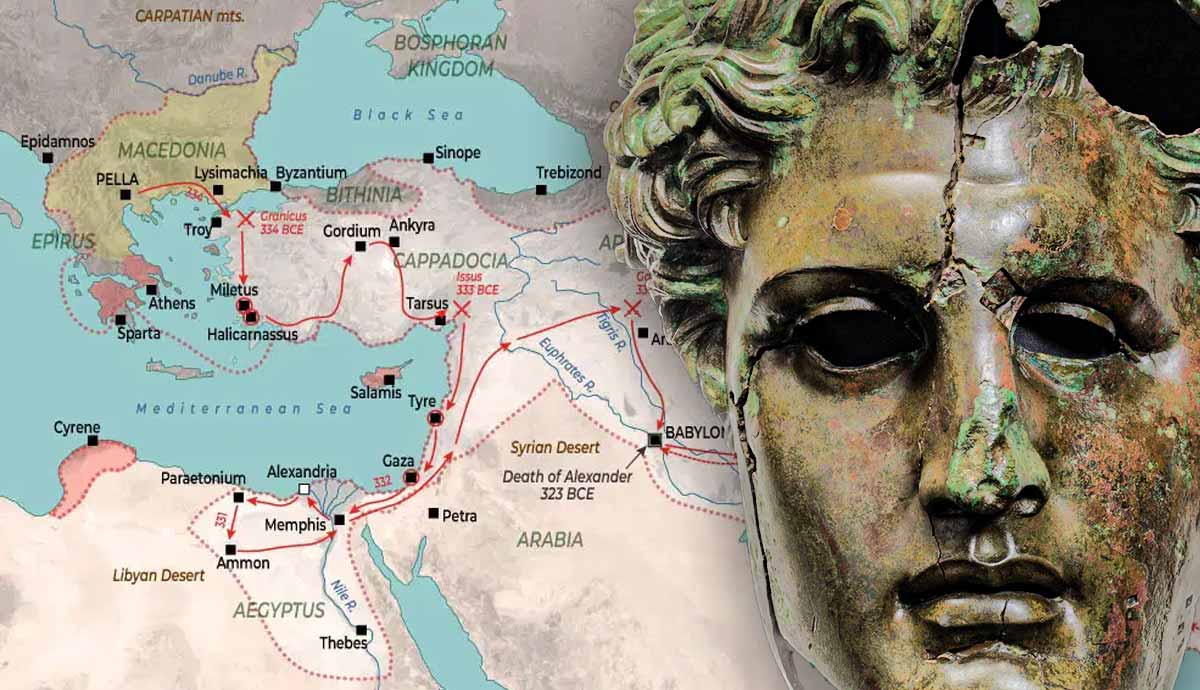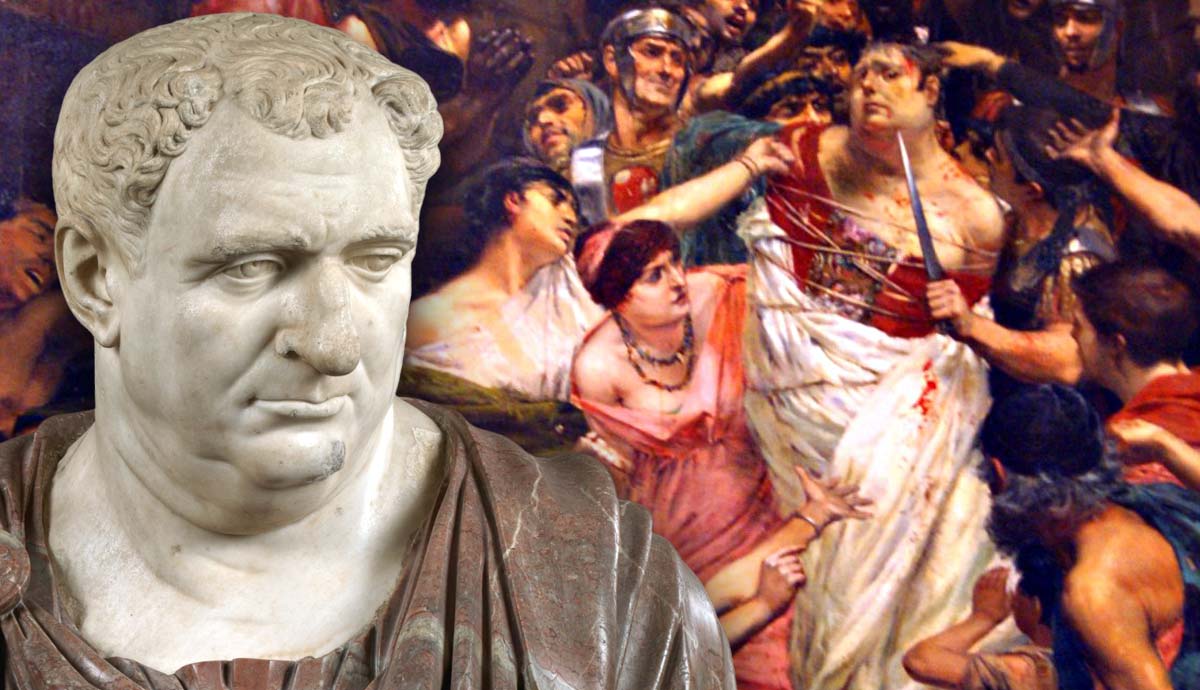
These ten ancient coins are important for many reasons. Some commemorate major historical moments in the history of western civilization. Others represent the highest levels of artistic and technical achievement in numismatics, not seen again for over 2,000 years. And still, others are so rare, that only a handful survive today. Continue reading to learn more about why each of these ancient coins made our list.
1. The Most Important Ancient Coin: The Brutus “Eid Mar” Denarius, 42 BC

This ancient coin marks one of the most significant events in western history- the assassination of Julius Caesar. The coin features a portrait of Brutus on the front (obverse) and a pileus (cap of liberty) flanked by two daggers on the back (reverse). These daggers were known as pugio and were likely the weapons used for the assassination. One dagger represented Brutus and the other represented his co-conspirator, Cassius. The pileus was a cap traditionally given to slaves when they were given their freedom. The cap and daggers showed that Brutus and Cassius liberated the Republic from a dictator.
In 44 BC, Julius Caesar declared himself dictator for life. Many senators feared his absolute power and what it would mean for the Roman Republic. Just a few months after his declaration, a group of senators, including Marcus Junius Brutus and Gaius Cassius, carried out their conspiracy to assassinate Caesar.
This coin was commissioned by Brutus himself in 42 BC, just months before his own suicide. The coins were recalled by Mark Antony and Octavian to be melted down for reuse. Thus, less than 100 are known to have survived, making this one of the rarest coins as well as the most significant.
2. The Athens Decadrachm, 460-430 BC

This important ancient coin was minted against the backdrop of war. The Greeks had spent the last 40 or so years fighting off invading Persian armies. Decisive battles included the famous Battle of Thermopylae, the Battle of Marathon, and the Battle of Plataea. These victories pushed the Persians out of Greece and back into Asia minor. Without these victories, the history of western civilization would look very different today.
Athens joined an alliance of free Greeks who strove to free any Greek cities still under Persian rule. They achieved this victory sometime between 469 and 465 BC. The Athenian Decadrachm was struck in commemoration of this victory over the Persians. The front depicts Athena, the city god of Athens. The back depicts an owl, the symbol of Athena.
The silver for this coin likely came from the silver mines outside the city of Athens. The coin was so valuable that it mainly circulated among the wealthy. Most Athenians never came into contact with the coin and it ceased being minted during the time of Pericles.
3. The Decadrachms Of Syracuse, 400-390 BC

The art of engraving ancient coins reached its highest standard during the 5th century on the island of Sicily. The various cities of the island competed to produce the highest-quality silver coins. The next three coins on our list all come from the island of Sicily during this period.
The decadrachms of Syracuse are considered among the finest examples of numismatic art from antiquity. Included in this group of ancient coins are the Kimon Decadrachm, the Arethusa Facing Head Tetradrachm, the Syracuse Demaraeteion Decadrachm, and the Euainetos Decadrachm.
The city of Syracuse was one of the most powerful cities in Magna Graecia. Among the most famous engravers of Syracuse was Kimon. The ancient coin pictured above is attributed to him. It features the water nymph Arethusa surrounded by four dolphins on the front and a quadriga (four-horse chariot) on the back. The quadriga represented the four tyrants of Syracuse. Nike appears flying above the quadriga.
4. The Akragas Decadrachm, 411 BC

The Akragas Decadrachm is one of the rarest ancient coins. Fewer than ten are known to have survived from antiquity. It is one of the great coins issued during the 5th century on the island of Sicily. These cities were among the earliest to begin minting silver coins.
The coin was likely issued to honor the winner of an Olympic chariot race in 411 BC. The front is a depiction of the sun god Helio traveling in his chariot. The sky is represented by an eagle and the sea below is represented by a crab. The back of the coin shows two eagles standing over the body of a hare.
The coin was likely used primarily as a commemorative piece. The amount of silver used to produce the coin made it too valuable to use in everyday transactions.
5. The Naxos Tetradrachm, 460 BC

Of the coins we’ve seen so far from the 5th century BC, this coin is arguably one of the greatest and best known. Unlike many other ancient coins, which were produced from multiple dies engraved by different people, this coin was struck from a single pair of dies. The coin is unsurpassed in the execution of the fine details and is one of the best examples of ancient Greek coin making.
The coin was minted to commemorate the refounding of Naxos in 461 BC. Naxos was the oldest Greek colony founded on the island of Sicily and was very wealthy due to the fertility of the surrounding volcanic soil. This led to the city being subjugated by Syracuse in 476 BC and the removal of the Naxians to the city of Leontini. They regained their city after the death of Hieron.
The god Dionysus is shown on the front and the satyr Silenos is shown seated on the back. The level of detail given to the depiction of Dionysus is unparalleled among ancient coins.
6. The Gold Stater Of Croesus, 550 BC

The earliest ancient coin was made of a naturally occurring alloy called Electrum. This alloy, a mixture of gold and silver, was found near the city of Sardis, the capital of the Lydian empire. King Croesus, the final king of Lydia, is most famous not for being the last king of the Lydian empire, but for introducing the first pure silver and pure gold coins.
Electrum proved to be a challenging material for minting coins. Because it is a naturally occurring mix of gold and silver, the exact amounts of gold and silver in each coin varied. This made it very hard to determine an exact value for the coins.
King Croesus solved this problem by minting coins in pure gold and pure silver. This gold Stater is the first pure gold coin ever minted. It features a bull and a lion facing each other.
7. The Titus Colosseum Sestertius, 81-82 AD

The Colosseum. One of the seven wonders of the world visited by over 6 million people a year. Construction of this famous building began in 71 AD during the reign of Emperor Vespasian. The first three levels were completed in 75 AD and the final two levels were completed in 80 AD. Upon its completion, Titus held dedication ceremonies that included the sacrifice of 5,000 animals and 100 days of games held in the new amphitheater.
Titus issued the sestertius to commemorate these ceremonies. It features a bust of Titus on the front and a depiction of the Colosseum on the back. This ancient coin is one of the earliest depictions of the Colosseum. Only 10 examples of the coin are known to exist.
8. The Portrait Denarius Of Cleopatra And Mark Antony, 32 BC

This ancient coin depicts one of the most famous couples in history- Cleopatra and Mark Antony. Cleopatra, also known as Cleopatra VII, was the last Ptolemaic ruler of Egypt. She was a central figure in the civil war between Julius Caesar, Mark Antony, and Octavian. All three men sought control of Egypt’s wealth to support their cause. Cleopatra first joined with Julius Caesar until his assassination in 44 BC. Afterward, she joined Mark Antony against Octavian.
The denarius was struck in 32 BC, probably to commemorate their short-lived alliance. Octavian defeated Mark Antony at the Battle of Actium in 30 BC and Mark Antony and Cleopatra each committed suicide. The result of Cleopatra’s involvement in the civil war was the end of Egyptian sovereignty, which wasn’t regained by Egypt until modern times, and the end of the Ptolemaic dynasty.
9. The Nero Port Of Ostia Sestertius, 64 AD

Rome was the largest city the ancient world had ever known. Yet it was located inland on the Tiber river and had no natural harbor nearby on the coast. This presented an increasingly urgent problem. As the city’s population continued to grow, the need to import grain and goods to support the population grew as well.
A great famine during the reign of Emperor Claudius led him to begin an ambitious engineering project to construct a massive harbor at the Port of Ostia, which sat at the mouth of the Tiber river. Unfortunately, Claudius didn’t live to see the completion of the project. The harbor was completed in 64 AD during the reign of Emperor Nero.
This sestertius bears a bust of Nero on the front and an overview of the new harbor with a reclining image of the river god Tiber on the back. The ships on the back are drawn in fine detail.
10. The Final Ancient Coin: Portrait Denarius Of Julius Caesar, 44 BC

Julius Caesar is arguably one of the most famous people in history. His assassination led to the transformation of the Roman Republic into the Roman Empire. He was one of the most brilliant and controversial military leaders in Roman history.
This denarius is significant because it bears the portrait of Julius Caesar. Prior to this, no coins minted in the Roman Republic bore the image of a ruler. Julius Caesar set the precedent for many aspects of Roman policy and governance moving forward and his approach to Roman coinage was no exception. He was the first and every Roman emperor that came after him followed his example.









